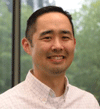
Diversity? What Diversity?
During my three years as a student at Chongshin Theological Seminary in Seoul, Korea, I never heard a single discussion related to diversity.
The student body was roughly 90% male. Every student and faculty member was a member of the Korean Presbyterian Church, and engaged in some sort of church ministry. About 99% of the students intended to pursue ordination in the Presbyterian Church upon graduation and enter parish ministry. Most significantly, out of my graduating class of about 350, we had only two non-Korean students. One was from Bangladesh, who was seeking an affordable theological education, and one was from Finland, who had married a Korean. My school would have had trouble under the ATS accreditation requirement of, “Intentional cross-cultural goals, using cross-cultural or bilingual pedagogies and resources, reading assignments and bibliographies that draw on a variety of cultural perspectives” (ATS Self-Study Handbook, Chapter 6, p. 6). No, no, no and definitely no.
 This lack of diversity did not seem so strange to me, as Korean society was, and still is, very homogenous. Koreans place a strong value on uniformity and harmony. But on a recent visit to my alma mater in Seoul, this lack of diversity was particularly striking to me. What does a seminary or religious study department have to lose and gain from such a homogenous student and faculty population?
This lack of diversity did not seem so strange to me, as Korean society was, and still is, very homogenous. Koreans place a strong value on uniformity and harmony. But on a recent visit to my alma mater in Seoul, this lack of diversity was particularly striking to me. What does a seminary or religious study department have to lose and gain from such a homogenous student and faculty population?
I compare my 1990s Korean experience to the plentiful rhetoric about the importance of diversity in North American theological and religious studies. We’ve probably heard variations of the following:
- “We need a faculty member of color on this committee.”
- “The website banner photo would ideally have two women and no more than three men.”
- “You should make sure that the reading lists represent a diversity of authors.”
While the above questions all have legitimate and honorable concerns, they also carry a potential subtext of dehumanization. Diversity is much more than counting faces of gendered or colored presence. By reducing diversity to headcount, we commit a huge disservice to our educational mandate.
Rather, the questions regarding diversity need to reflect the multitude of expressions that humans have in the richness of their present experiences and past heritages.
 I remember one of my theology professors, who seemed to understand this. Professor Suh was pretty scary, not as in “scary smart,” but more like “Amityville Horror scary.” I understand that he failed more students than the rest of the seminary professors combined. In every class period, Professor Suh would broach topics in the context of our individual undergraduate studies. “Who here majored in physics?” “Who here majored in linguistics?” He would then address a theological point through that particular academic lens. Professor Suh realized that the diverse educational experiences in the classroom would contribute to our perceptions of theology.
I remember one of my theology professors, who seemed to understand this. Professor Suh was pretty scary, not as in “scary smart,” but more like “Amityville Horror scary.” I understand that he failed more students than the rest of the seminary professors combined. In every class period, Professor Suh would broach topics in the context of our individual undergraduate studies. “Who here majored in physics?” “Who here majored in linguistics?” He would then address a theological point through that particular academic lens. Professor Suh realized that the diverse educational experiences in the classroom would contribute to our perceptions of theology.
As I think about it, Chongshin Seminary was somewhat diverse, but in ways different, from gender or ethnic diversity. Our ages ranged from 23 (me) to the upper 50s. Some had come from rural farming communities and others were raised in major urban centers, and several spent their formative years in both settings. Some served small congregations of less than ten, and two of us were on staff in the largest church of our denomination (30,000 members). The student body came from a variety of socio-economic backgrounds. Some students struggled with physical hardships. We had different personalities, different levels of aspiration and different attitudes towards western intellectualism. Each one of us had a very unique pathway to theological education.
I believe that an authentic commitment to diversity absolutely requires a balanced ethnic and gendered presence. But that is merely a starting point. The value of diversity is lost if professors do not shift our pedagogies, theologies, and epistemologies accordingly. A diverse community is not for the website photos, but to change the very way that we do things and understand ourselves. An important first step (and only a first step) might be to note the richness we are all bringing already to our classrooms, even culturally homogeneous places, as a launching point to strive for even greater difference.
After all, if the diversity we already have is so helpful, just imagine what it would mean to crack open the possibilities in the midst of the many other diversities our students will face.